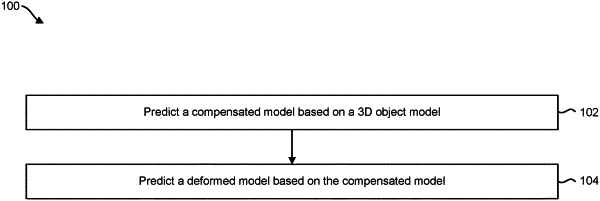| CPC G06T 17/10 (2013.01) [G06T 7/149 (2017.01); G06T 2207/10028 (2013.01); G06T 2207/20081 (2013.01)] | 15 Claims |

|
1. A method, comprising:
predicting a compensated model based on a three-dimensional (3D) object model having global values and local values for each of a plurality of edges, wherein the compensated model comprises of a training object model point cloud representing the 3D object model with modifications that compensate for a predicted manufacturing deformation, wherein the global values provide global information for simulating a thermal mass effect feature of the plurality of edges, and wherein the local values provide local neighborhood information for simulating a thermal diffusion effect feature of the plurality of edges;
predicting a deformed model based on convolution of features of the plurality of edges for the compensated model predicted;
comparing the deformed model to the 3D object model; and
based on comparing the deformed model to the 3D object model, adjusting one or more of the 3D object model, the compensation machine learning model, the compensated model, or a printing variable to reduce geometric inaccuracy in a 3D object to be printed.
|